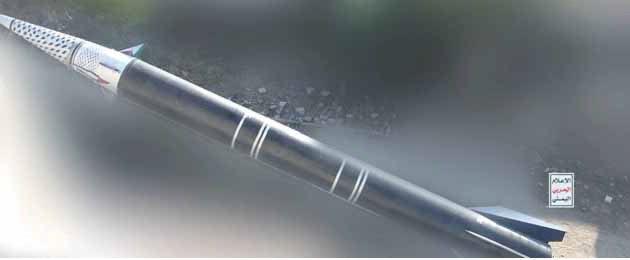The British newspaper Telegraph published a report quoting military experts saying that the Yemeni Palestine missile is “a precision-guided solid-fuel missile, more advanced than the liquid propellant missiles without guidance that the Houthis have been using until now.”
The newspaper pointed out that “solid-fueled missiles are more flexible in combat and can be quickly installed and launched.”
The Telegraph claimed in another report that “the Palestine missile, which exceeds the speed of sound during flight between western Yemen and the Israeli port of Eilat, then disappeared, but this is still a significant development,” indicating the failure of Arab and Western defense systems to fully track the missile’s trajectory.
It added, “We know for sure that no international warships can overcome missiles that exceed the speed of sound, and the presence of only three ships (perhaps capable) of defeating this new threat will not reassure shipping companies.”
The newspaper stated, “Analysis of the launch operation also showed columns of white exhaust smoke, which missile experts say indicates that the missile operates on solid fuel. These missiles are considered more reliable and much faster to launch than their liquid-fueled counterparts, making the alliance’s task of detecting and striking them even more difficult than it already was.”
It confirmed that the Yemeni Armed Forces have proven that they “still remain capable of outperforming coalition forces.”
The newspaper acknowledged that the American coalition has not succeeded in “suppressing” the Yemenis, attributing this to the fact that “Yemeni weapon systems are mobile, hidden, and diverse, making them impossible to completely neutralize. This means that coalition operations cannot guarantee safe passage for ships.”
The American news agency Associated Press reported on the new Yemeni missile, stating that “hypersonic weapons, which fly at speeds higher than Mach 5, could pose crucial challenges to missile defense systems because of their speed and maneuverability.”
It added, “Ballistic missiles fly on a trajectory in which anti-missile systems like the US-made Patriot can anticipate their path and intercept them. The more irregular the missile’s flight path, such as a hypersonic missile with the ability to change directions, the more difficult it becomes to intercept.”
Due to the tilted angle at which the Palestine missile was launched in the scenes distributed by the media, other experts believe it may be the longest-range tactical missile to date, as tactical missiles usually have shorter ranges.
The Leader of the Revolution, Sayyed Abdul-Malik Badreddin al-Houthi, revealed in his latest weekly speech that the new Palestinian ballistic missile, Palestine, was specially designed according to the requirements of the fourth stage of escalation, both in terms of range and the technical level needed to bypass the enemy’s defensive layers, which include Arab countries along with American and European forces spanning the distance between Yemen and Palestine.
Last March, the Yemeni Armed Forces successfully targeted the occupied Umm Al-Rishrash with a missile described at the time as “developed.” The Zionist enemy’s defenses failed to detect or intercept it, causing significant concern within the enemy entity.
At that time, Sayyed Abdul-Malik al-Houthi said, “That operation opened a new horizon for Yemeni missile power.”
The Yemeni Armed Forces have not yet revealed the specifications of the Palestine ballistic missile, leaving the enemy in a state of confusion amidst the observations of military experts.




















